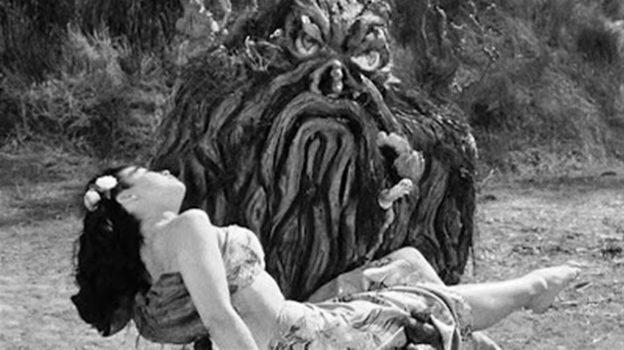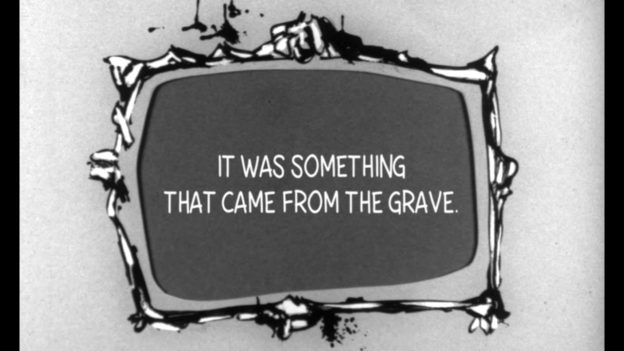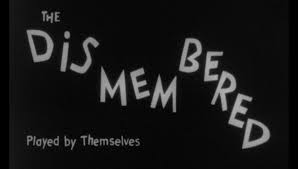
31+ Days of Horror. 33 Horror Movies. 33 Reviews. Hooptober Challenges and Bonus Tasks.
View my 2017 Cinema Shame/Hoop-Tober Watch Pile Shame-a-thon Statement here.
Nature Shame:
Unwatched Warner Archive Blu
Hoop-tober Challenge Checklist:
Decade: 1950’s
Pre-1970’s
#14. From Hell It Came (1957)
 The “Killer Tree” sub-sub-subgenre has deeper roots than you might imagine. Off the top of my head, you’ve got the tree from Evil Dead (1981), The Guardian (1990) starring my muse Ms. Carey Lowell, Day of The Triffids (1962), and a brief segment in Poltergeist (1982). But we’re really just scratching the terra firma of this fertile film forest.
The “Killer Tree” sub-sub-subgenre has deeper roots than you might imagine. Off the top of my head, you’ve got the tree from Evil Dead (1981), The Guardian (1990) starring my muse Ms. Carey Lowell, Day of The Triffids (1962), and a brief segment in Poltergeist (1982). But we’re really just scratching the terra firma of this fertile film forest.
I’d be remiss if I didn’t also mention The Crawlers (1990), Trees (2000), and Trees II: The Root of All Evil (2004). The last of which is notable because it stars Ron Palillo (aka Arnold Horshack). You haven’t seen any of these, and I haven’t either. (Though, Trees II boasts a good pun and I can’t often resist titular punnage.)
Without a doubt, however, the grandaddy of them all was 1957’s From Hell It Came, a film that is unfairly maligned as one of the worst movies ever made. None other than Leonard Maltin gave this film his backhanded seal of approval by saying, “As walking-tree movies go, this is at the top of the list.”
That said, let’s look at this logically. If a movie resides in the canopy of its particular sub-sub-subgenre, how can it possibly belong on your or anyone’s worst movie list? I’ve already named a handful of films that live in the shadow of From Hell It Came.

The Story
On a South Seas island, a prince is wrongly “convicted” of murder after he embraces the devil medicine brought to the island by Western doctors hoping to wipe out the island’s plague / potential nuclear fallout problem. That the tribe’s witch doctor did the killing, framed the prince, and judged him guilty of murder represents perhaps a glitch in the island system of law. Before being put to death with a dagger in his heart and buried in a hollow tree trunk, however, the prince vowed to return and seek revenge on those that had wronged him.
No doubt you can see where the movie’s going with this. As a result of the nuclear contamination — because you positively cannot have a 1950’s monster movie without some sort of atomic age panic — the prince returns as a scowling tree stump known as “Tabanga,” the legendary tree monster of the South Seas.

Produced and directed by the Milner brothers, From Hell It Came represents their second and final creature feature after The Phantom from 10,000 Leagues (1955). Without belaboring the point, there’s a good reason they only made two.
From Hell It Came gained due infamy from the remarkably labored tree monster that lumbers (pun intended) around screen terrorizing island wrongdoers. The Tabanga effects have been credited to the legendary 1950’s effects man Paul Blaisdell. Blaisdell monstered up films such as Invasion of the Saucer Men (1957) and It Conquered the World (1956) among many others. After submitting a few color sketches to the Milners with no response, Blaisdell figured the filmmakers had passed on his ideas… until he saw the film and recognized his concept — in a laughably lesser package.
I’m going to shop short of crediting Tabanga’s comical “guy-in-a-tree-suit” appearance for the lasting appeal of From Hell It Came because the film contains more than just ironic entertainment. Not much more, but perhaps as a result of the Milners’ lack of any formal filmmaking skills they ignored screenwriting and narrative convention as much as they embraced face-value 1950’s science fiction tropes.

The way the Milners force the “Tabanga” legend into the story of American doctors investigating nuclear fallout, never comes together — but a viewer steeped in 1950’s science fiction will note the bubblegum holding the operation together.
When the Tabanga first begins to grow up from the ground — his pout face and permanent frown lines betraying the sadness in his lonely, still-beating heart — the doctors’ first reaction to exhume the thing to take it back to the lab. To study? To nurse back to health? The true motivations remain slightly unclear and grow even foggier when they determine that the “life” begins ebbing from this roadside stump carving. To break this down, they took the pulse of a tree stump and then decided to inject it with a serum that’s proven successful at exacerbating radiation effects in monkeys.
They’re justifiable shocked when the arrive at their lab the next morning to discover that it’s been trashed, and Pouty McStumpface has disappeared, having already commenced his comeback tour of revenge. Tabanga’s targets offer little resistance as he systematically dispatches them in quicksand and apparent strangulation. There’s no will they or won’t the survive. The wrongdoers die and the doctor’s go on a half-hearted crusade to maybe dissuade a tree from killing or maybe not. The plan’s not entirely clear; they’re armed with a mild case of righteous indignation and rifles.

Final Thoughts:
I won’t oversell this. The locals dress in cabana wear from Tommy Bahama and the doctors dote over a grotesque tree-stump like it might potentially cure cancer — yet it seems overtly clear that a frowny-face tree stump that grows magically from the ground would most certainly harbor ill will.
The off-kilter dialogue between the American doctors contains upwards of 75% sexual innuendo, and veteran character actor Tod Andrews in particular delivers his share of lecherous lines with unrequited panache. And most notably, From Hell It Came lacks any particular moral compass. The doctors recklessly engage in pseudo-science and local politics. The islanders murdered an innocent man in cold blood. The tree monster — who should be our rooting interest by process of elimination — doesn’t return with conscience enough to differentiate between those that deserve a comeuppance and those that do not.
All this adds up to a film that can’t be pinned down despite the fact that as viewers we’ve seen this particular story play out in dozens of creature features from the 1950’s. Odd, offputting and poorly conceived, From Hell It Came might not be the result of great minds, but the baffling filmmaking decisions that came together to create the great Tabanga stumbled into an unforgettable branch of inexplicable entertainment.
Now, Warner Archive, as long as we’ve deemed From Hell It Came worthy of a Blu-ray, where’s my SHH! The Octopus 3-disc Special Edition?
30Hz Movie Rating:

Availability:
A 1957 killer tree movie doesn’t deserve to look this good. But as long as it does, let’s embrace the absurdity and applaud Warner Archive’s efforts.
2017 Cinema Shame/Hoop-Tober Watchpile Shame-a-thon
#1. Caltiki The Immortal Monster (1959) / #2. The Devil Doll (1936) / #3. The Velvet Vampire (1971) / #4. Mill of the Stone Women (1960) / #5. The Initiation (1984) / #6. Poltergeist (1982) / #7. Night of the Lepus (1972) / #8. The Black Cat (1934) / #9. The Raven (1935) / #10. Friday the 13th (1980) / #11. Friday the 13th Part 2 (1981) / #12. Body Snatcher (1945) / #13. Dismembered (1962) / #14. From Hell It Came (1957) / #15. Symptoms (1974) / #16. Eating Raoul (1982) / #17. Spellcaster (1988) / #18. The Old Dark House (1932) / #19. House (1985) / #20. House II: The Second Story / #21. Christine (1983) / #22. House III: The Horror Show (1989) / #22. House IV: The Repossession (1992)







 When the words “lost” and “film” appear together I sign the dotted line. I love the sense of time-capsule re-discovery that goes along with these types of releases, like they’ve just been unearthed and no one on the face of this earth has seen them in 50+ years.
When the words “lost” and “film” appear together I sign the dotted line. I love the sense of time-capsule re-discovery that goes along with these types of releases, like they’ve just been unearthed and no one on the face of this earth has seen them in 50+ years. The Story
The Story




 I crashed #TCMParty last week because I knew The Body Snatcher was a Lewton-produced, Karloff-starrer I hadn’t seen. When showtime arrived, I tried to change the channel, but what ho! I was recording Brooklyn Nine Nine and This is Us. A show I wouldn’t miss and one show I’d be dead if I deleted.
I crashed #TCMParty last week because I knew The Body Snatcher was a Lewton-produced, Karloff-starrer I hadn’t seen. When showtime arrived, I tried to change the channel, but what ho! I was recording Brooklyn Nine Nine and This is Us. A show I wouldn’t miss and one show I’d be dead if I deleted.


